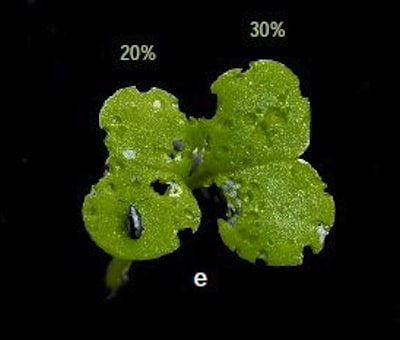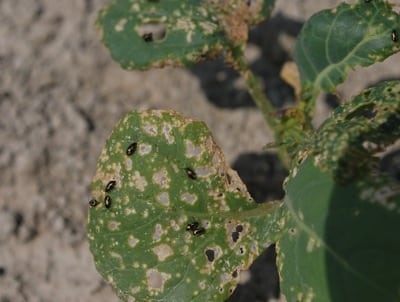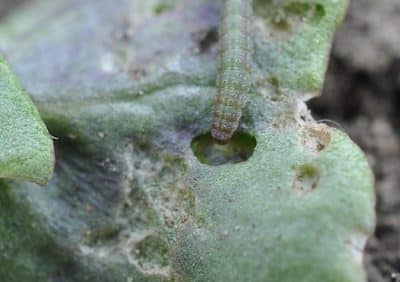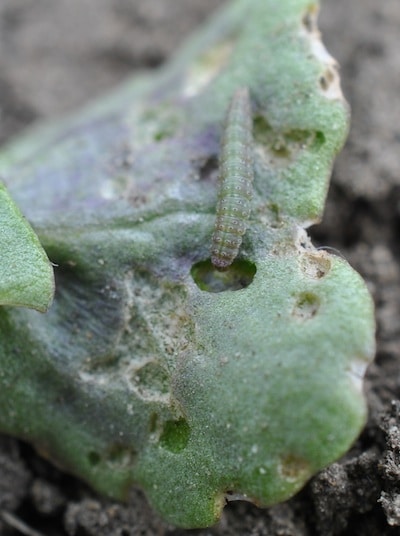
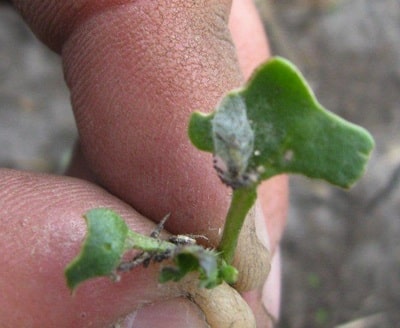
Add diamondback moth larvae to your early season scouting list. Canola fields in spots all across the southern Prairie are reaching thresholds where spraying may be required. This is much earlier than usual, and heavy feeding on cotyledon to 2-leaf plants may set back maturity — which is already on the late side. Growers cannot expect insecticide seed treatment to protect canola from diamondback moth larvae.
Before spraying, make sure that:
1. Large areas within the field have reached the nominal threshold of 25% or more of the leaf area lost. (See photos below.)
2. Diamondback larvae are still present.
3. They are actively feeding. (Many diamondback moth larvae may have started to cocoon (pupate) and are no longer a threat.)
4. Newest leaves are being eaten. If the newest leaves are in good shape, the crop will probably grow through the threat.
If you answer “yes” to all four, then consider a spray. If you answer “no” to any one, keep scouting. Situations can change — for the good or bad — in a matter of one or 2 days.
Feeding looks like: Leaves are chewed at the outside margins or in the middle, often leaving large areas missing. First instars will mine inside the leaf, leaving white tunnels. Later instars will also feed from the underside of leaves, leaving the top waxy layer — which will look like a window.
Flea beetles and diamondback larvae: Defoliation is defoliation — whether by diamondback moth larvae or flea beetles or both. The same four rules above apply to flea beetles. Only two products have both flea beetles and diamondback moth on the label — Lambda-cyhalothrin (Matador/Silencer) and Decis. If your target is only one of these insects, you will have other options.
Control may be reduced if applied above 25 C. Spraying later in the day as temperatures are declining is often better than earlier as temperatures are increasing.
If the immediate threat has subsided and most larvae seem to be cocooning, hold off on a spray. Parasitism by beneficial insects may take care of a large percentage of the population. A stretch of heavy rain may also curtail the next generation by washing feeding larvae off into ponded water or by increasing insect disease.
Watch Scott Meers talk about beneficial insects.
